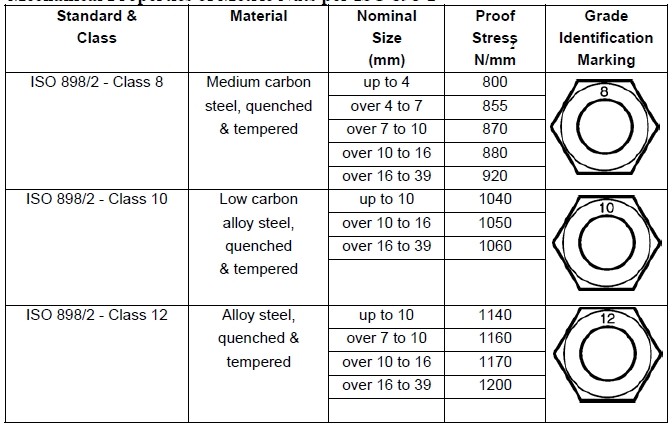Technical Reference for Hexagon Nuts & Various Nuts
Nuts are usually made of various steels, stainless steels, copper or aluminium. For different usage and working conditions, nuts generally can be classified to low strength, middle strength and high strength. This classification are mainly according to the material, process, mechanical properties.
Carbon Steel and Alloy Steel Hex Nuts and Hex Flange Nuts
The relative standards for nuts classification are SAE J995, Grade 2, 5 and 8, equals to metric system, ISO/DIN standard class 5, 8 and 8.
SAE J995 Gr. 2 nuts are the most common used low strength nuts, (also equals to ISO/DIN Class 5). Its made from low carbon steel, for example, C1010 steels.
SAE J995 Gr. 5 nuts are middle strength nuts, which equals to ISO/DIN Class 8 nuts. Generally made of middle carbon steel, for example C1020, C1035 or C1045 steels. Its used in some structure project, normally the finished nuts were tempered and quenched to reach a higher strength.
SAE J995 Gr. 8 nuts are the high strength fasteners, which are designed for heavy structure project or bridge, high way constructions. Its mostly made of alloy steel, for example 4140, Cr42Mo, etc. The finished Nuts need to be tempered and quenched.
Material reference guide for SAE J995 hex and hex flange nuts
| SAE J995. | C max. | Mn min | P max | S max |
| Gr.2 | 0.47 | - | 0.12 | 0.15 |
| Gr 5 | 0.55 | 0.3 | 0.05 | 0.15 |
| Gr 8 | 0.55 | 0.3 | 0.04 | 0.05 |
Mechanical properties guide for SAE J995 hex nuts and hex flange nuts
| SAE J995. | Hardness | Proof Strength | Heat Treatment | Material | |
| Gr.2 1/4"-1.1/2" | HRC 32 max | - | no | low carbon steel | |
| Gr 5 | 1/4"-1" | HRC 32 max | 120,000 psi | optional | middle carbon steel |
| >1"-1.1/2" | 105,000 psi | ||||
| Gr 8 | 1/4"-5/8" | HRC 24-32 | 150,000 psi | tempered & quenched | middle carbon steels or alloy steels |
| >5/8"-1" | HRC 26-34 | ||||
| >1" | HRC 26-36 | ||||
There are more standards for nuts, both inch and metric system, below are reference guides only.
 |
Mechanical Properties of Metric Nuts per ISO 898-2
 |
Stainless Steel Hex Nuts and Hex Flange Nuts
Stainless steel is an iron-based alloy steel that must contain at least 10.5% chromium. The presence of
chromium creates an invisible surface film that resists oxidation and makes the material “passive” or
corrosion resistant. Other elements, such as nickel or molybdenum are added to increase corrosion
resistance, strength or heat resistance. The generaly stainless steel hex nut and hex flange nuts are made of
austenitic stainless steels which are contain higher amounts of chromium and nickel than the other types. They are not hardenable by heat treatment and offer a high degree of corrosion resistance. The tensile strength of austenitic stainless steel varies from 75,000 to 105,000 psi.
18-8 Stainless steel contains approximately 18% chromium and 8% nickel. Grade classification of 18-8 series include, but not limited to 302, 303, 304 etc.
Mechanical Properties of Metric Stainless Steel Fasteners
 |